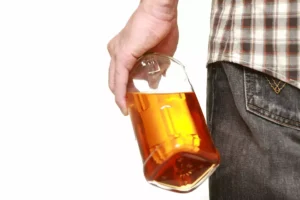The Dangers of Drunk Driving

The number of Hispanic drivers surveyed increased sevenfold during that time period (Voas et al. 1997). The NHTSA survey described above (Royal 2000) also asked participants about their perceived chance of being stopped and arrested for drinking and driving. More than half the respondents thought it would be at least somewhat likely that they would be stopped by the police if they drove after having too much to drink. However, consequences of drinking and driving 38 percent of respondents believed it would be at least somewhat likely that if they drove after drinking too much they would be stopped by the police, arrested, and convicted. Only 2 percent believed it would be almost certain that all three of these things would happen. Among people who drove after drinking, males reported more drinking–driving trips in the past month than females (an average of 13.2 trips vs. 6.6 trips).
The impact of mental states on semi-autonomous driving takeover performance: a systematic review

Impairment sets in long before it becomes noticeable and well before reaching the legal limit for BAC. A small amount of alcohol can impair judgment and vision, depending on factors such as gender, weight, and others. Therefore, just because a person is not “legally” drunk, it does not mean it is safe for them to drive. The only way to protect yourself and others from the dangers of drunk driving is to refrain from driving after consuming any alcohol.

Get Help for Alcoholism Today
Drive Sober or Get Pulled Over, which runs from August 14-September 2, aims to educate people about the dangers and consequences of driving drunk. Penalties should include a combination of administrative sanctions (e.g. driving licence suspension) and criminal ones (e.g. mandatory minimum fines) of adequate severity. Many states require offenders to install ignition interlock devices at the driver’s own expense. An ignition interlock device is a breath test device connected to a vehicle’s ignition.
- The reasons range from lack of planning and lack of resources to a person’s location or even their upbringing.
- The American Psychological Association (APA) states that people who experience road rage are more likely to misuse alcohol or drugs.
- Directly after drinking alcohol, your heart rate and blood pressure rise.
- There are also mutual support groups like Alcoholics Anonymous that can help those suffering from alcohol use disorder (AUD) and those who have multiple DUIs stay sober.
- Increased alcohol use among women in adolescence and young adulthood as well as a lower legal limit of alcohol-impaired driving are considered important factors underlying the gendered DUI arrest trends (Robertson et al., 2011; Schwartz, 2008).
- Even small amounts of alcohol affect one’s brain and the ability to drive.
Legal Conditions and Terms
In a growing number of states, jail terms have become mandatory, even for first-time drunk driving offenders. Typically, first-offender jail terms are one or two days in length and can be served on a weekend. But it is still jail time, which carries consequences—including consequences for your mental health. Traffic deaths are most likely to be alcohol related among males, Native Americans and Mexican Americans, people ages 21 to 45, those who die in motor vehicle crashes on weekend nights, and people with symptoms of alcohol dependence. Fatal crash risk was at least 11 times higher for drivers with BACs of 0.08 percent, the legal limit for intoxication in most States, than for drivers with zero BACs. Fatal crash risk was 52 times higher for male drivers ages 16 to 20 with BACs of 0.08 percent, compared with zero-BAC drivers of the same age.
It is not known how many people are killed each year in crashes involving drug-impaired drivers because of data limitations.9 Regardless, driving while impaired by any substance is dangerous and illegal. Motorcycle operators involved https://ecosoberhouse.com/ in fatal crashes were found to have the highest percentage (28%) of alcohol-impaired drivers than any other vehicle types. However, the transition from manual to automated driving introduces unique challenges and opportunities.
- When you drink and drive, you’re compromising cognitive ability and responsiveness, which increases your risk for an accident.
- About one-third of fatal car crashes in the United States in 2019 involved drunk drivers.
- Sixteen- to 20-year-olds have had the greatest decline in alcohol-related traffic deaths since 1982, down 56 percent, from 5,244 to 2,329 (see figure 3).
- During the Labor Day holiday period, we typically see an increase in drunk-driving deaths — and that’s why you’ll likely see more law enforcement on the roads.
- The number of Hispanic drivers surveyed increased sevenfold during that time period (Voas et al. 1997).
What Happens When You Get a DUI

Neuropsychopharmacology: Official Publication of the American College of Neuropsychopharmacology

